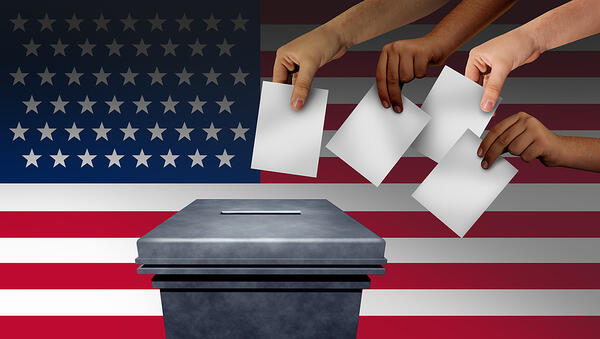Racial Identity Explains Presidential Vote Choices More than Geography

In the first study of racial voting pattens to examine every U.S. congressional district, Institution for Social and Policy Studies faculty fellow Shiro Kuriwaki and his colleagues found that race explained 60% of variation in voting preferences for the last two presidential elections, with geography accounting for another 30% of the variation.
For a paper published last week in American Political Science Review, Kuriwaki, Stephen Ansolabehere and Angelo Dagonel of Harvard University, and Soichiro Yamauchi developed new statistical techniques and applied them to large-sample surveys and demographic and presidential election data from all 435 congressional districts across the country.
They found that the preferences of Hispanic and white voters varied significantly not only across regions and states, but also congressional districts within states. In contrast, Black voters regularly supported the Democratic presidential candidate regardless of where they lived. Southern and Midwest states were the most likely to show racial polarization.
“Our study shows that racially polarized voting is not only a phenomenon in the South,” Kuriwaki said. “The divergence between the white and minority vote in parts of the Midwest was also striking, while urban districts had little racially polarized voting within them. So, geography matters. But on balance, racial identity has more explanatory power.”
Kuriwaki said that measuring 435 districts at once allowed him and his colleagues to present the electoral math of contemporary American politics in revealing, straightforward ways. He noted, for example, that their data show racial polarization declined from 2016 to 2020. Put together, the new paper shows that winning a majority of votes in most congressional districts today requires a party to assemble a coalition in the district that include support from at least one non-white racial group.
“It’s clear that there is a stark racial divide in the country,” he said. “But there is also a rural-urban divide and a division over education. And perhaps the racial divide — at least as a deciding factor in voting behavior — is receding relative to other factors.”
At ISPS, Kuriwaki works to advance the goals of Democratic Innovations, a program designed to identify and test new ideas for improving the quality of democratic representation and governance.
The new study improves existing survey methods through deployment of a new statistical method the authors designed to learn from sparse survey data. The method reveals valuable information about the relationship between demographic variables gathered in a survey, which is rich in data but can be obscured by limited quantity, and combines it with data from the U.S. census, which is precise but does not report some types of information useful for researchers, such as the number of non-college white voters in a given congressional district.
In creating comprehensive snapshots of every congressional district in the country, the researchers were able to determine whether differences in voting preferences for president among racial groups can be explained more by their racial identity or where they live.
The researchers found that, nationally, 22% of non-white voters and 59% of white voters voted for the Republican presidential candidate in 2016. But while Black voters across the country showed relatively consistent voting behavior, white and Hispanic voters displayed significant variation in different places. For example, 40% of white voters in Massachusetts chose the Republican candidate, while 84% of white voters in Mississippi voted Republican.
The authors discuss how the need for politicians to build a multiracial coalition to win in most congressional districts will only grow in importance with rising percentages of Asian, Black and Hispanic voters in both major political parties.
Kuriwaki said that the study can help guide redistricting and policymaking in light of last month’s Supreme Court decision preventing states from drawing congressional districts to dilute and disempower Black voters.
“As the voting behavior of the U.S. electorate shifts, so too must the laws and policies that prevent racial vote dilution,” the authors write. “Our analysis supports both the need for federal voting rights law and the need for the narrow tailoring of federal and state rules to specific areas in line with the principles of federalism.”